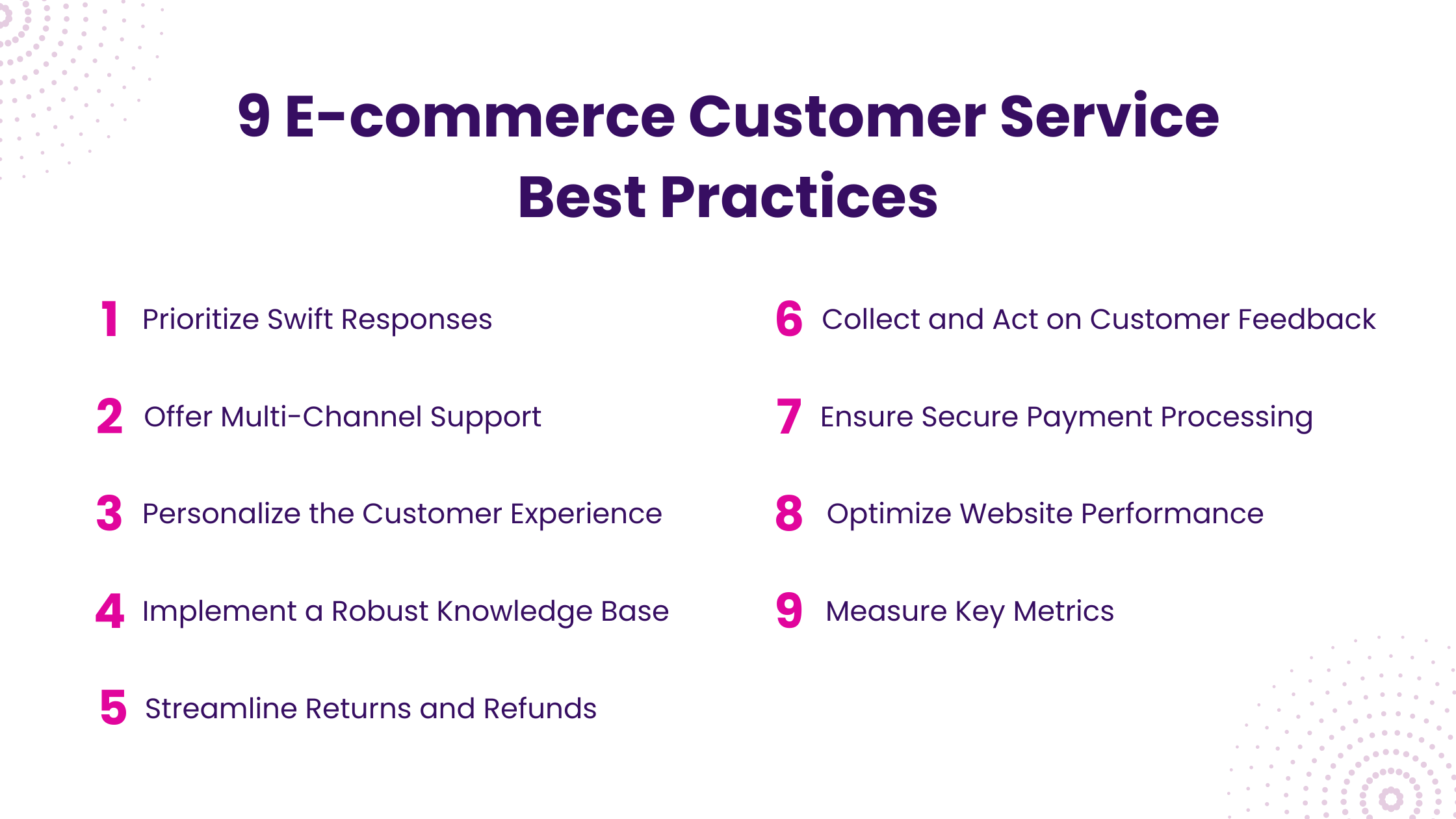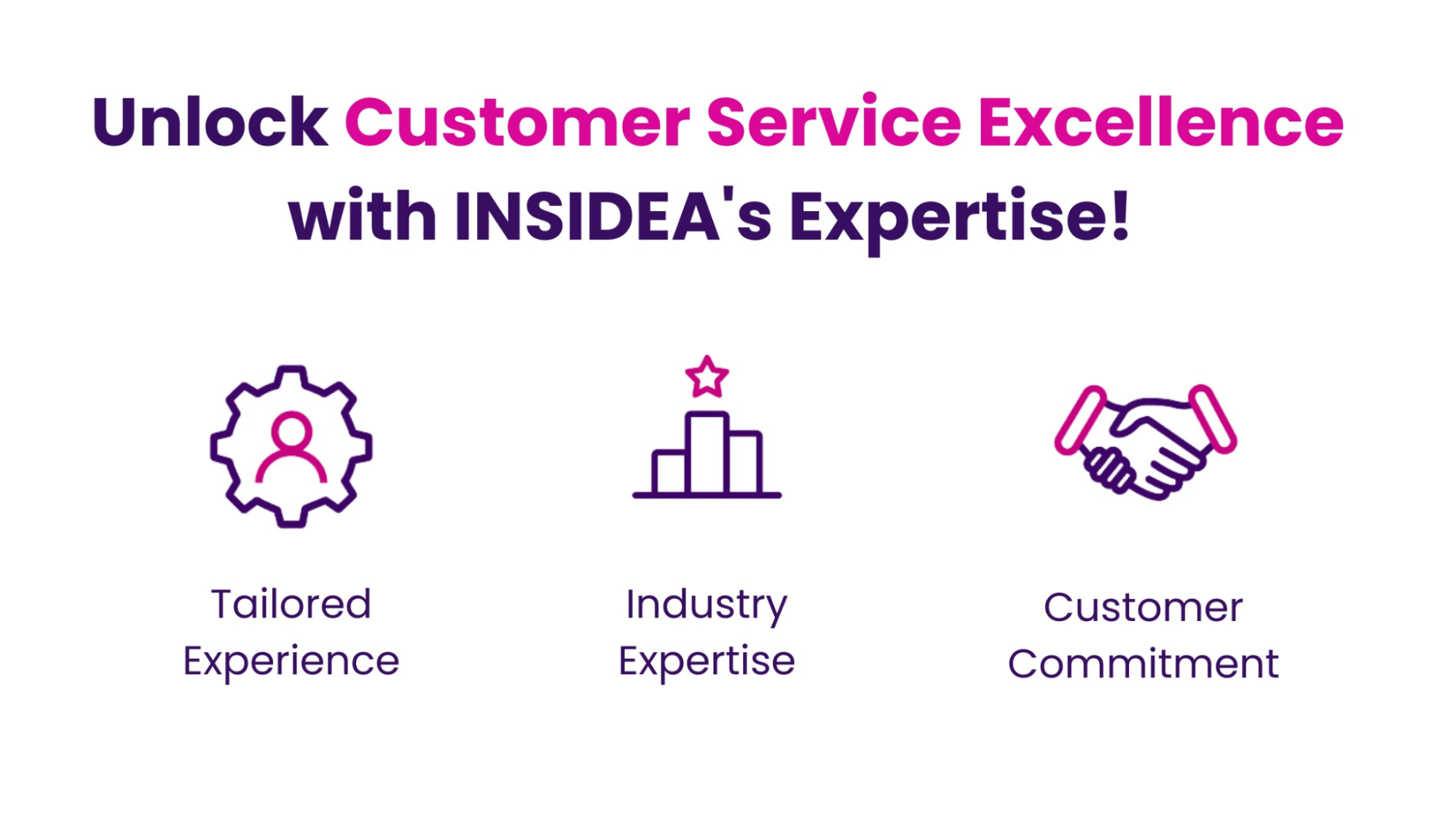You’re browsing online, scrolling through countless options for that perfect purchase. Suddenly, you find it—the product that checks all the boxes. You click add to cart and proceed to checkout. But what happens next truly sets a business apart from the rest. Will they treat you like a mere transaction, or will they go above and beyond to make you feel valued?
In e-commerce, customer loyalty is everything. And, with so many options at their fingertips, customers can choose where they spend their hard-earned money. So, how can businesses stand out and keep customers coming back for more? It all starts with exceptional e-commerce customer service.
As shopping evolves from retail stores to the comfort of home, where Me-commerce rules with 24/7 shopping and endless choices, customer service becomes the key differentiator. How do you ensure your customers choose you over a competitor? It’s all about delivering value with every interaction.
In this blog, we will explore a range of e-commerce customer service best practices to help your business stand out from the competition and maximize customer satisfaction.
Why Is Customer Service Important?
Good customer service is crucial because it significantly influences customers’ decisions and loyalty to a brand.
According to these statistics from Obrello, e-commerce customer service is crucial:
- 84% of customers say customer service is a deciding factor in purchases
- 95% link it to brand loyalty, and
- 68% are willing to buy from companies with excellent customer support.
This highlights the importance of maintaining high customer service standards to retain customers and uphold your brand’s reputation.
Comparing E-Commerce Customer Service And In-Store Customer Service
Regarding customer service, shopping online and in-store are pretty different. Below, we will compare aspects of each of the platforms:
| Aspect |
E-commerce Customer Service |
Retail Customer Service |
| Availability | 24/7 support expected. | Limited to store hours. |
| Support Channels | Multiple channels like websites and social media. | Primarily in-person, some phone/web support. |
| Responsiveness | Prompt responses to service requests. | Response time varies, sometimes immediate. |
| Connection | Digital communication, no physical cues. | Direct interaction, interprets body language. |
| Data Use | Heavy reliance on data for personalized support. | More focus on personal |
9 E-commerce Customer Service Best Practices

Customer service has emerged as a make-or-break factor for businesses striving to succeed in the digital marketplace. Delivering exceptional e-commerce customer service fosters customer loyalty and fuels business growth through positive word-of-mouth and repeat purchases.
To help you navigate this critical aspect of e-commerce, we present a detailed explanation of e-commerce customer service best practices.
1. Prioritize Swift Responses
When it comes to e-commerce, speed matters; customers expect quick responses to their inquiries through live chat, email, or social media. To meet this expectation:
- Implement chatbots or AI-driven responses for quick answers.
- Set clear service level agreements (SLAs) for response times.
- Train support agents to handle inquiries promptly.
- Monitor response times and strive for continuous improvement.
- Use automated email notifications to keep customers informed about their inquiries.
2. Offer Multi-Channel Support
Modern e-commerce customers communicate through various channels, including email, live chat, phone, and social media. To cater to diverse preferences, provide multi-channel support options. Ensure that customers can seamlessly switch between these channels while receiving consistent and high-quality service.
Here are some e-commerce customer service best practices in this regard:
- Provide customer support through email, live chat, phone, and social media.
- Ensure consistent professionalism and knowledge across all channels.
- Integrate a unified ticketing system for centralized communication.
- Implement chatbots for 24/7 support availability.
- Enable customers to switch between channels seamlessly without losing context.
3. Personalize the Customer Experience
Generic responses and recommendations no longer suffice. Here are some strategies to take your e-commerce customer service to great heights:
- Address customers by their names in communications.
- Recommend products based on browsing and purchase history.
- Use segmentation to send personalized email marketing campaigns.
- Utilize customer feedback to tailor recommendations and offers.
- Customize marketing and support messages based on customer preferences.
4. Implement a Robust Knowledge Base
A well-structured knowledge base is a valuable self-service resource for e-commerce customers. It empowers customers to find answers to common questions and reduces the workload on your support team.
Here’s how you can go about it:
- Create an organized knowledge base with a user-friendly interface.
- Include comprehensive articles, tutorials, and FAQs.
- Update content regularly to reflect product changes and customer needs.
- Implement a robust search function for easy information retrieval.
- Encourage user contributions to build a dynamic knowledge base.
5. Streamline Returns and Refunds
In e-commerce, returns and refunds are an inevitable part of the customer journey. To provide excellent e-commerce customer service and streamline the returns and refunds process.
Here’s how you can go about it:
- Communicate the return and refund policy on your website.
- Automate the returns process for faster resolution.
- Provide customers with pre-paid return labels when applicable.
- Keep customers informed about the status of their return or refund.
- Use customer feedback from return experiences to improve policies and procedures.
6. Collect and Act on Customer Feedback
Feedback is a treasure trove of insights that can drive improvements in your e-commerce operations.
To ensure the best e-commerce customer service, these are the steps you can take:
- Send post-purchase surveys to gather feedback.
- Encourage reviews and ratings from satisfied customers.
- Use feedback to identify areas for improvement.
- Share positive feedback and customer success stories on your website.
- Continuously evaluate and adapt your customer service based on feedback.
7. Ensure Secure Payment Processing
One of the foundational pillars of e-commerce is secure payment processing. Customers must feel confident that their financial information is safe when purchasing on your website.
Here are some best practices:
- Invest in robust payment security measures.
- Display trust badges and SSL certificates prominently.
- Provide multiple secure payment options to customers.
- Regularly update your security protocols to meet industry standards.
- Educate customers about your commitment to their payment security.
8. Optimize Website Performance
A seamless and responsive website is essential for delivering a positive customer experience. Slow loading times, broken links, or website glitches can frustrate customers and lead to cart abandonment.
Here’s what you can do to ensure the best e-commerce customer service experience:
- Regularly monitor website performance and loading times.
- Conduct usability testing to identify and resolve user experience issues.
- Ensure mobile responsiveness for customers on various devices.
- Keep product pages and checkout processes streamlined and efficient.
- Implement 24/7 website monitoring to address issues proactively.
9. Measure Key Metrics
Rely on data-driven metrics to gauge the effectiveness of your e-commerce customer service efforts.
Make use of the following to ensure the best customer service:
- Track customer satisfaction (CSAT) scores to gauge happiness.
- Monitor Net Promoter Score (NPS) to measure customer loyalty.
- Analyze customer retention rates for long-term success indicators.
- Set clear goals for your support team based on performance data.
- Regularly review and adjust strategies to enhance the overall customer experience.
You can implement these customer service best practices in your business and improve client satisfaction. However, if you are facing any implementation challenges, we are here to help. Reach out to INSIDEA, and let’s strengthen your business’s customer experience together.
Unlock Customer Service Excellence with INSIDEA’s Expertise!

Great customer service is vital for the success of your e-commerce business. It’s intertwined with the overall customer experience. Following the above practices will not only enhance your brand’s reputation but also help grow your e-commerce business through outstanding customer service.
Are you ready to transform your customer service and take your customer experience to the next level? INSIDEA is here to guide you through every step of the way, ensuring that your support team is empowered to deliver exceptional service.
As experts in customer support solutions, we pride ourselves on helping businesses optimize their support strategies for maximum efficiency and customer satisfaction. Reach out today to discover how INSIDEA can revolutionize your customer support and contribute to your business success!
Tailored Support Strategies: At INSIDEA, we understand that every business is unique. That’s why we work closely with you to develop customized support strategies that align with your specific needs and goals.
Industry Expertise: Our team brings a wealth of experience and industry knowledge to the table, ensuring you have access to the best practices and insights in customer support.
Customer Commitment: Your customers’ happiness is our top priority. We are dedicated to helping you exceed their expectations and foster long-lasting relationships.
Ready to elevate your customer support experience? Book a meeting with our experts today and start your journey towards outstanding customer service and satisfaction.










































